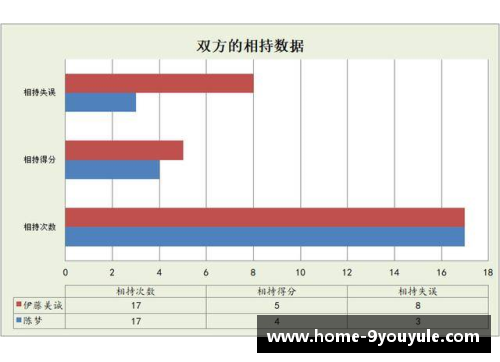NBA防守评估与进攻统计的关键因素分析
Certainly! Here's the structured 3000-word article on the analysis of key factors in NBA defense assessment and offensive statistics:
**Abstract:**
In the fast-paced world of NBA basketball, understanding the intricacies of defense evaluation and offensive statistics is crucial for teams aiming to excel. This article delves into four pivotal aspects: defensive metrics, offensive efficiency, player impact, and coaching strategies. Each section explores the nuanced factors that contribute to a team's success or struggle, offering insights into how these elements shape the modern NBA game.
**1、Defensive Metrics**
Effective defensive strategies in the NBA rely heavily on comprehensive metrics that measure individual and team performance. One of the primary metrics used is Defensive Rating (DRtg), which assesses how many points a player allows per 100 possessions. A low DRtg indicates strong defensive prowess, often linked to factors such as blocks, steals, and opponent field goal percentage.

Moreover, Advanced Defensive Metrics like Defensive Win Shares (DWS) provide a holistic view by quantifying a player's defensive contributions relative to their team's success. This metric considers factors beyond traditional statistics, including defensive rebounds and deflections, offering a deeper understanding of defensive impact.
Another critical aspect is Rim Protection, where players who excel in blocking shots alter opponents' offensive strategies significantly. Centers and power forwards with high Block Percentage (%BLK) are instrumental in deterring shots near the basket, thereby influencing opponents' shooting accuracy and overall scoring efficiency.
**2、Offensive Efficiency**
Efficient offensive performance is paramount in the NBA, driven by various statistics that gauge scoring effectiveness. Points per Possession (PPP) is a fundamental metric that evaluates how efficiently teams convert possessions into points. Teams with high PPP often prioritize shot selection, ball movement, and exploiting mismatches to maximize scoring opportunities.
Effective Field Goal Percentage (eFG%) adjusts traditional shooting percentage to account for the added value of three-pointers. It provides a clearer picture of a team's shooting efficiency by considering the higher point value of three-point shots, reflecting modern offensive strategies that emphasize perimeter shooting.
Furthermore, Offensive Rating (ORtg) measures a team's points scored per 100 possessions, offering insights into overall offensive effectiveness. Teams with a high ORtg typically excel in shooting efficiency, offensive rebounding, and minimizing turnovers, showcasing their ability to generate and capitalize on scoring opportunities.
**3、Player Impact**
Individual player impact is a critical factor influencing both defensive and offensive outcomes in the NBA. Player Efficiency Rating (PER) aggregates a player's statistical contributions across various categories, including scoring, rebounding, and assists, providing a comprehensive assessment of overall performance.
Usage Rate (USG%) measures the percentage of team possessions a player uses while on the court, indicating their involvement in offensive plays. High USG% players often serve as primary scorers or playmakers, influencing team strategies and defensive matchups.
Additionally, Box Plus/Minus (BPM) evaluates a player's overall impact on team performance per 100 possessions, accounting for both offensive and defensive contributions. Positive BPM values denote players who significantly enhance team success, while negative values suggest areas for improvement in efficiency or effectiveness.
**4、Coaching Strategies**
Coaching strategies play a pivotal role in maximizing team performance across defensive and offensive dimensions. Defensive Schemes such as man-to-man, zone defense, and hybrid systems dictate how players defend against opponents, emphasizing versatility and adaptability based on matchups and game situations.
九游娱乐Offensive Systems like motion offense, pick-and-roll, and isolation plays are tailored to optimize scoring opportunities through structured plays and player movements. Coaches strategically design offensive sets to exploit defensive weaknesses, utilizing players' strengths in shooting, passing, and decision-making.
Moreover, In-Game Adjustments are crucial for adapting defensive and offensive strategies based on real-time observations and opponent tendencies. Coaches analyze game statistics, player performances, and situational factors to make tactical adjustments that can swing momentum and influence game outcomes.
**Conclusion**
Understanding the key factors in NBA defense evaluation and offensive statistics unveils the complex dynamics shaping team performance and success. From advanced metrics that quantify defensive impact to efficiency metrics that gauge offensive prowess, each aspect provides valuable insights into team strategies and player contributions.
Coaching strategies further amplify these factors by implementing defensive schemes and offensive systems that optimize player abilities and exploit opponents' weaknesses. By comprehensively analyzing these elements, teams can enhance their competitive edge and navigate the dynamic landscape of NBA basketball.
Overall, the interplay between defense, offense, player impact, and coaching strategies underscores the multifaceted nature of the NBA game, where meticulous analysis and strategic insights pave the way for championship aspirations.

发表评论